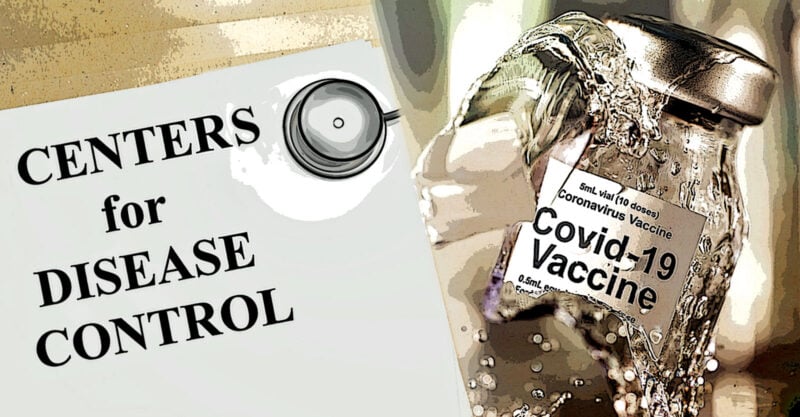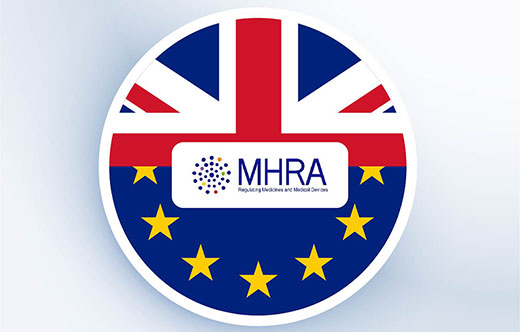CDC-Funded Study of 99 Million COVID-Vaccinated People Finds ‘Very Rare Adverse Events’
A study of adverse events in 99 million people vaccinated for COVID-19 found increased but “very rare” risks of neurological, blood and heart disorders. Myocarditis odds were over 6 times higher than normal after a second Moderna shot.
A global study of over 99 million people found increased risks of several serious adverse events following COVID-19 vaccination. However, the researchers concluded the conditions were very rare and the benefits of vaccination still outweigh the risks.
Researchers from the New Zealand-based Global COVID Vaccine Safety project conducted the study, published Feb. 12 in the journal Vaccine, with funding from the Centers for Disease Control and Prevention (CDC) and the U.S. Department of Health and Human Services (HHS).
The observational study pooled data on people who received the Pfizer or Moderna mRNA vaccines or the Oxford AstraZeneca adenovirus vector vaccine across 10 sites in eight countries in Europe, the Americas, Australia and Asia.
Scientists calculated post-vaccination rates of neurological, cardiovascular and other outcomes occurring up to 42 days after the shots and compared them to background rates before the pandemic.
The researchers found increased risks for myocarditis, pericarditis, Guillain-Barré syndrome and cerebral venous sinus thrombosis (CVST), noting this confirmed similar findings in previous research. The study also identified other safety signals of concern.
The analysis had limitations including nonstandard data sources across countries, inability to fully account for risk factors between groups and lack of coverage in some global regions such as the U.S.
According to Brian Hooker, Ph.D., senior director of science and research at Children’s Health Defense, told The Defender, the cutoff date of 42 days is “unrealistic for all of the adverse events considered, especially cardiac conditions which appear primarily after physical exertion.”
Hooker said:
“It is so curious how the issues presented in the ‘results’ section of the paper misaligned with the sunshine-and-roses assurance in the ‘conclusions’ section where the adverse events are referred to as ‘rare’ without any qualifier to define what the authors mean by ‘rare.’”
Key findings ‘likely much worse for susceptible target groups’
The large-scale retrospective study focused on 13 prespecified outcomes judged to be of particular interest for vaccine safety monitoring, including:
- Neurological: Guillain-Barré syndrome, transverse myelitis, Bell’s palsy, acute disseminated encephalomyelitis, generalized and febrile seizures.
- Hematological: CVST, splanchnic vein thrombosis, thrombocytopenia, immune thrombocytopenia, pulmonary embolism.
- Cardiovascular: myocarditis, pericarditis.
The study pulled data from sites in Denmark, France, Canada, Argentina, Australia, Finland, Scotland and New Zealand. Data were collected from vaccinations from December 2020 through August 2023, with some variations between countries.
Researchers found a 2.49 times higher-than-expected occurrence of Guillain-Barré syndrome following the initial dose of the AstraZeneca vaccine.
Cases of CVST, which can lead to strokes, increased by 3.23 times after the first AstraZeneca dose.
Myocarditis and pericarditis risks were significantly elevated after both mRNA vaccines and were seen across the first three doses. The highest risks were after the second Moderna vaccine dose — a 6.1 times increase in risk — and for pericarditis after the third dose of AstraZeneca — a 6.91 times increased risk.
“The OE [observed-to-expected] ratios (over 6.0) for cardiac sequelae just jump off the page and are extremely likely much worse for susceptible target groups, including adolescents, young adults and men,” Hooker said.
Dr. Peter McCullough agreed, telling The Defender, “For myocarditis, the peak risk age group is 18-24, given the overall risk of 2.78, the risk for younger men is probably multiples higher in reality.”
Acute disseminated encephalomyelitis, or swelling in the brain, was 3.78 times more likely after the first Moderna dose.
Slight increases in Bell’s palsy facial paralysis followed the first Pfizer or Moderna shot, up to 1.25 times more likely.
Generalized seizures also were slightly elevated after an initial Moderna and a fourth Pfizer vaccination, up to 1.15 times more likely.
Here is a more complete list of adverse events of special interest analyzed in the study and some of the more significant observed risk increases reported:
Neurological:
- Guillain-Barré syndrome: 2.49 times (increase) after the first dose of AstraZeneca.
- Acute disseminated encephalomyelitis: 3.78 times after the first dose of Moderna.
- Transverse myelitis: 1.91 times after the first dose of AstraZeneca.
- Bell’s palsy: 1.25 times after the first dose of Moderna; 1.05 times after the first dose of Pfizer.
- Generalized seizures: 1.15 times after the first dose of Moderna; 1.09 times after the fourth dose of Pfizer.
- Febrile seizures: 1.36 times after the first dose of Moderna; 1.44 times after the second dose of Moderna.
Hematological:
- CVST: 3.23 times after the first dose of AstraZeneca; 1.49 times after the first dose of Pfizer.
- Immune thrombocytopenia: 1.40 times after the first dose of AstraZeneca; 1.08 times after the first dose of Pfizer.
- Thrombocytopenia: 1.33 times after the first dose of Moderna; 1.11 times after the first dose of Pfizer; 1.07 times after the first dose of AstraZeneca.
- Pulmonary embolism: 1.88 times after the third dose of AstraZeneca; 1.33 times after the first dose of Moderna; 1.29 times after the first dose of Pfizer; 1.20 times after the first dose of AstraZeneca.
Cardiovascular:
- Myocarditis: 2.78 times after the first dose of Pfizer; 3.48 times after the first dose of Moderna; 2.86 times after the second dose of Pfizer; 6.10 times after the second dose of Moderna; 2.09 times after the third dose of Pfizer; 2.01 times after third dose of Moderna.
- Pericarditis: 1.74 times after the first dose of Moderna; 2.64 times after the fourth dose of Moderna; 6.91 times after the third dose of AstraZeneca.
The study authors called for further investigation “to confirm associations and assess clinical significance,” and for “comprehensive vaccine safety monitoring,” stating that “very rare adverse events associated with COVID-19 vaccines may only come to light after administration to millions of individuals.”
McCullough said the study’s data “fully support” the global withdrawal of all COVID-19 vaccines and boosters. “They are not safe for human use.”
He said:
“As an epidemiologist, I can tell you these are not ‘small’ risks with COVID-19 vaccination. Adverse events were diluted over all age groups and were truncated at 42 days.
“For large populations, relative risks of 1.2 or greater are important, greater than 2 or 3 are frankly alarming.
“Finally, under-reporting of events to safety databases in some countries like the U.S. must be considered.”
Limitations and conflicts of interest
While the study’s large global dataset provides statistical power to detect rare events, there are some notable limitations to consider when interpreting the results.
Most significantly, the limitation of data collection of only up to 42 days post-vaccination carries the likelihood of vast underreporting, especially for symptoms that may take longer to develop. For example, McCullough has reported cardiac arrests happening up to two years after vaccine administration.
Second, by red-flagging only those adverse events where researchers are 95% sure the vaccine makes them 1.5 times more likely, some real risks could slip through the cracks when it comes to further studies or the development of remedies.
Lower than “1.5 times more likely” still means higher-than-reported vaccine-related risks. While appropriately cautious, the validity of this statistical distinction merits further evaluation.
Third, the study did not analyze or report on deaths following COVID-19 vaccination. The researchers did not mention vaccine-induced mortality at all and only stated that additional studies are still warranted using methodologies better suited to assess different kinds of data.
Hooker said:
“The authors appear to sidestep the severity of COVID-19 vaccine AEs [adverse events] by avoiding reporting on ‘death,’ ‘hospitalization,’ and ‘serious injury’ associated with the reported conditions as well. These are notably missing and one wonders why they were omitted given the high mortality levels indicated through CDC’s VAERS [Vaccine Adverse Event Reporting System].”
Fourth, the datasets were not globally representative and contained a number of confounding factors. Data from the U.S., which had some of the worst COVID-19 outcomes and ample reporting of adverse events, were not included. Asia and Africa were completely unrepresented.
The authors did not address these exclusions but acknowledged the difficulties of pooling data collected through different methods and standards across countries. Medical coding practices and protocols and electronic records systems varied widely among the study sites, introducing inconsistencies in the data analyzed.
Finally, in the funding statement, the authors acknowledge that the Global COVID Vaccine Safety project is 100% “funded by CDC/HHS.”
The Ontario site is supported by Public Health Ontario and the Institute for Clinical Evaluative Sciences, funded by the Ontario Ministry of Health.
In the section declaring competing interests, some authors acknowledged receiving funding from the CDC directly, though they clearly stated the study’s conclusions were their own.
Some authors reported associations with or funding from other state or country-level health agencies, and relationships with Big Pharma companies such as Gilead Sciences (makers of remdesivir), Novo Nordisk, AbbVie, Sanofi, Pfizer and GlaxoSmithKline.
The lead author of the study, K. Faksova, is employed by the Danish vaccine manufacturer Staten Serum Institut.
“This is a blatant conflict of interest,” Hooker said.
The researchers also said they did not have permission to share data from the study — meaning their conclusions cannot easily be verified or challenged by other researchers.
Suggest a correction







